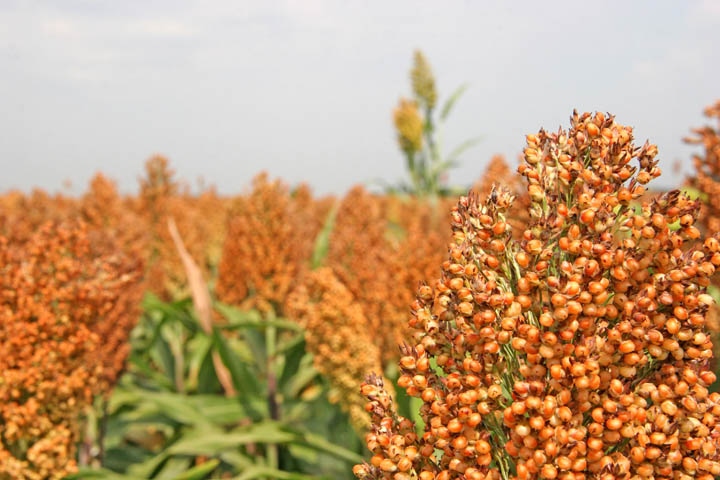November 12, 2012

Sorghum was originally a tropical plant, but USDA scientists in Lubbock, Texas, are looking to Asia to increase sorghum's cold tolerance and expand its production range.
Agricultural Service Research (ARS) plant physiologist Gloria Burow and her colleagues at the agency's Cropping Systems Research Laboratory in Lubbock have found cold-tolerance genes in Chinese cultivars and are using them to develop lines that breeders can use to produce hardy commercial varieties. ARS is USDA's principal intramural scientific research agency, and this research supports the USDA priority of promoting international food security.
Sorghum is part of the human diet in India, Africa and parts of Japan. It is used in the United States primarily in animal feed, but it is a major U.S. export and is sold domestically to make gluten-free flour. By increasing its cold tolerance, Burow and her colleagues hope to extend its range in the Midwest beyond the sorghum belt that now stretches from Texas to Kansas and includes parts of Nebraska. They want to extend it into the Dakotas and west to Colorado.
Extending sorghum's range also would benefit growers overseas. Burow works with Cleve Franks, a scientist at DuPont Pioneer, and with ARS colleagues John J. Burke, Zhanguo Xin, Halee Hughes and Charlie Woodfin in Lubbock.
The researchers crossed one of the most promising cold-tolerant lines from China, called PI610727, with a cold-sensitive sorghum variety, and produced 171 inbred lines. They raised those lines at sites in Texas where they recorded soil and air temperatures to assess the cold-tolerance capabilities for each plant. They also extracted DNA from the leaves and used molecular markers to genotype them, essentially matching DNA markers in plants with their cold hardiness, ability to germinate early, and ability to produce robust seedlings under cold conditions. They also evaluated each line in Petri dishes at cold temperatures and at optimal temperatures for seed germination.
The scientists have released the 171 inbred lines to breeders and research groups through the ARS Germplasm Resources Information Network, and at least two research groups have requested additional information on that population so far. They also published a genetic map of 141 genetic markers in Molecular Breeding that will make it easier for breeders to identify cold tolerance.
Sorghum germplasm also is being evaluated at four locations in Texas, Kansas and South Dakota. The effort could lead to higher yields and crops that can be planted earlier in the spring so that they tap more moisture from the soil.
Read more about this research in the October 2012 issue of Agricultural Research magazine.
You May Also Like




